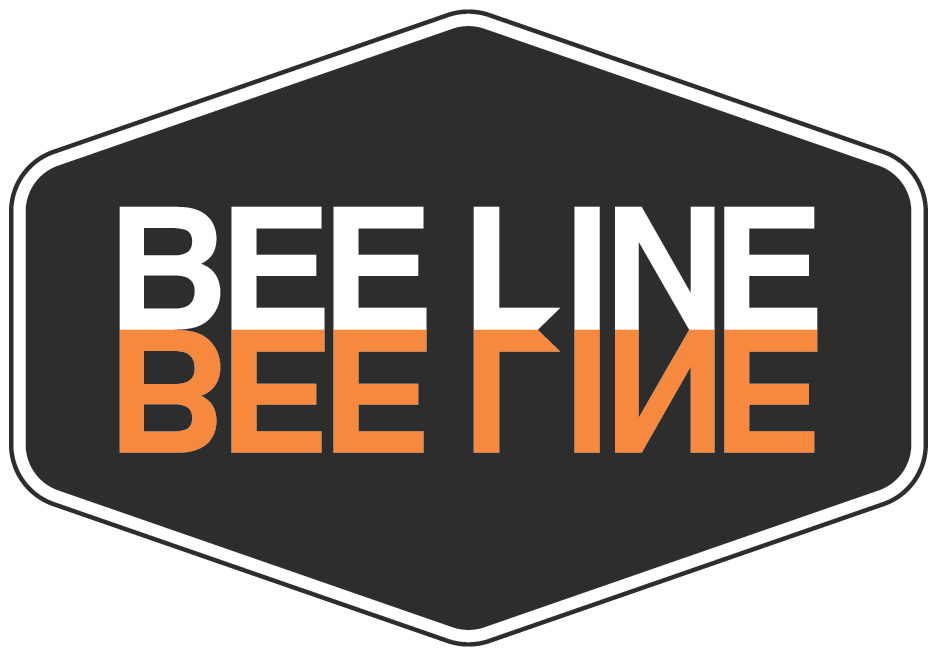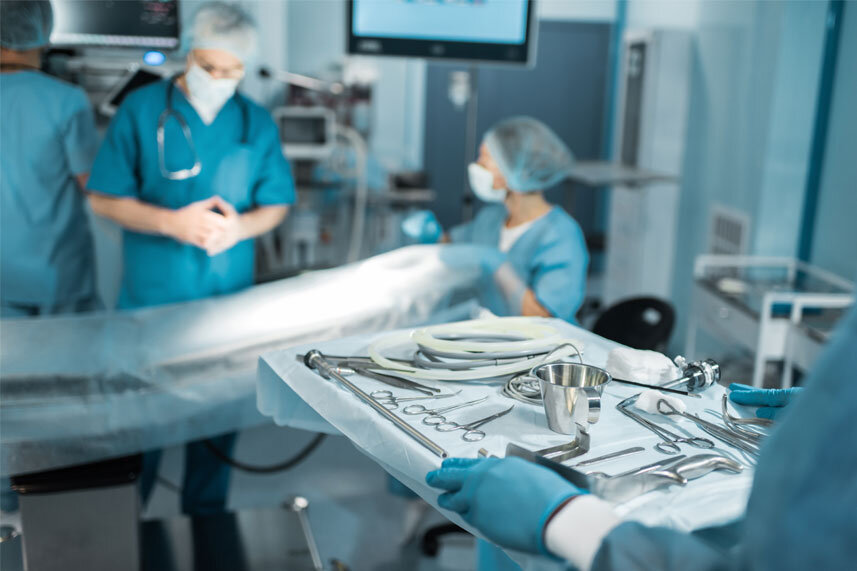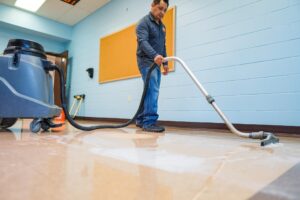To ensure the safety of both healthcare professionals and patients, it’s important to implement rigid surgical cleaning best practices. This includes environmental cleaning along with surgical instrument cleaning and needs to be completed by the proper sanitization and disinfecting agents. Hospitals are at high risk for healthcare-associated infections (HAI) due to the presence of sick or contagious patients and every preventative measure needs to be taken in order to reduce transmission. To uphold surgical cleaning best practices, you need to find a cleaning company that has extremely high sanitization standards, in-depth training, and careful procedures in place that go above and beyond the industry standard. In this article, we’ll discuss a few surgical cleaning best practices and why finding a reputable, professional cleaning company is worth the investment.
CDC Approved Guidelines
Before diving into the best practices, it’s important to understand the Center for Disease Control and Prevention’s (CDC) recommendations. These should be taken as the absolute bare minimum—especially in surgical areas or hospitals. The CDC states that cleaning needs to be done thoroughly using high-level disinfection and sterilization to remove all inorganic and organic materials that remain on surfaces in surgical and other healthcare-related environments. Cleaning needs to be done using high-quality equipment and approved products that have been proven to eradicate all germs and pathogens. Sterilizing your medical equipment properly is also essential in upholding surgical cleaning best practices and should be done thoroughly after being exposed to bodily fluids or contaminated materials. The procedures used to clean and sanitize must be proven as effective and should be performed by trained professionals.
To read more about the CDC’s guidelines for upholding best practices for environmental cleaning in healthcare facilities, click here.
Best Practices for Surgical Environmental Cleaning
To make sure that your facility is safe and you’re doing everything you can to reduce the rate of transmission of HAIs, make sure you follow these best practices and cleaning protocols.
Properly Prepare the Site
To make sure that the cleaning process is efficient from start to finish, it’s essential to properly prepare the site. This includes pre-sanitizing cleaning and disinfecting along with choosing safe cleaning products that won’t harm anything in the room. By prepping the room and removing any organic material, you’ll make sure that disinfecting is as efficient as possible and removes any trace of pathogens. Bee Line offers comprehensive services that exceed the necessary requirements for healthcare facility cleaning regulations.
Utilize Effective Cleaning Supplies and Equipment
It’s important to make sure you’re cleaning, disinfecting, and sanitizing with the proper supplies and equipment. Going around and wiping things down with a Clorox wipe is not going to be thorough enough to make a surgical site safe. You need to use supplies and equipment that are proven effective for surgical cleaning, so they remove all pathogens. Your disinfectants should be fast-acting, EPA-approved, and unaffected by environmental factors. Your application method needs to cover every inch of the room.
At Bee Line Support, we use a state-of-the-art monitoring system to record all high-touch surfaces throughout each room to ensure the space is completely and properly disinfected. Once we’ve finished, we deploy high-level black light auditing and reporting to ensure the total disinfection of all surgery terminals. Through this thorough review and monitoring process, we can guarantee our clients that the surgical room is left spotless.
Implement Proven Cleaning Techniques
Even with effective cleaning supplies and equipment, a surgical site can be dangerous if proper cleaning techniques aren’t used. Bee Line utilizes a hospital-grade misting technology, the Kärcher PS 4/7 Bp misting system, to reduce pathogens in every square inch of your space. The Kärcher PS 4/7 Bp hospital-grade misting system is specifically designed to reduce the risks of HAIs and transmission of diseases like COVID-19 by killing viruses, bacteria, and mold faster, safer, and quieter.
The black light auditing process allows us to ensure that our proven cleaning techniques work and there has been total disinfection. Bee Line also partners with ImageFIRST to assure that our cleaning supplies are 99.999% clean of common pathogens. This creates a germ-fighting partnership from the start that is deadly to harmful bacteria and pathogens. Through the Triple BioShield Protection technology, all bacteria wind up “dead on contact” with every cloth and rag used.
Cleaning and Disinfecting
For a complete cleaning procedure, it’s important to understand the difference between cleaning and disinfecting and how to perform each. Cleaning includes the process of removing excess organic material or fluid from a site. When you skip cleaning, you’ll end up spreading around bacteria instead of removing it. Disinfecting includes the act of killing pathogens on contact and can be done using different disinfectant products and equipment. If you have any questions about the differences between cleaning and disinfecting, don’t hesitate to contact the professionals at Bee Line Support today.
Utilize a Trained and Experienced Team
To make sure that all of the above best practices are being followed, you should employ a professional cleaning team that has the proper training and qualifications. At Bee Line Support, our sites are cleaned by employees who understand the microbiology, training, medical cleaning standards, and surgical cleaning requirements according to the Association for the Healthcare Environment (AHE).
We also provide training for employees to gain their certificate for surgical cleaning technicians (T-CSCT). This workshop is designed to set a level of expertise for managing pathogens and practicing innovative techniques specific to operating rooms. At the end of the course, our T-CSCT managers can execute the proper sterile room cleaning and disinfecting techniques, practice standard operating room procedures and protocols to prevent the transmission of pathogens, apply critical thinking and decision-making skills specific to OR rooms, and communicate effectively with colleagues throughout the process.
Prioritize Safety
Throughout the entire surgical cleaning and disinfecting process, it’s important to prioritize the safety of employees, patients, and staff. That’s why Bee Line’s compliance managers hold a Certificate of Mastery in Infection Prevention (CMIP). This process requires a rigorous three-phase certification program that provides graduates with the comprehensive ability to facilitate infection prevention care in all clinical environments. CMIP Managers understand the ins and outs of all types of microorganisms, such as viruses, bacteria, fungi, and pathogens, as well as types of chemicals, and how to apply them to make pathogens disappear. They’re also trained on precautionary measures to increase the safety of everyone involved and ensure that the proper hand hygiene, use of personal protective equipment, and respiratory hygiene are completed.
Contact us today to partner with Bee Line, the leader in surgery center cleaning. We’ll provide you with a comprehensive quote for your surgical cleaning needs and ensure that your site is left 100% clean, sanitized, and disinfected to help reduce the chance of HAI transmission. When it’s all said and done, you can’t find a more innovative and all-inclusive professional cleaning company anywhere but with Bee Line.
Call Bee Line at 312-BEE-LINE or message us today to get started on the path to cleanliness!
About The Author
Jesse Parra
author
It’s hard to find a more reliable manager than Jesse. When it comes to your needs, concerns, and questions, you can count on Jesse to help you out. Jesse is a native to Chicago and is a proud pet parent to his chihuahua named Peter. In his spare time, you can find Jesse practicing his photography skills, cheering on the Cubbies, and seeking out the best taco joints in town! His favorite aspect of working with Bee Line is the incredible teamwork, his friendly coworkers, and the many opportunities for growth.




